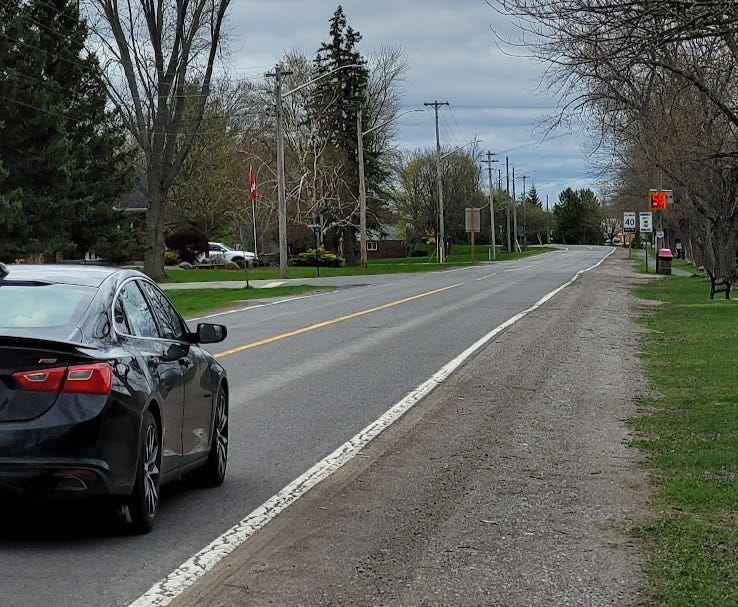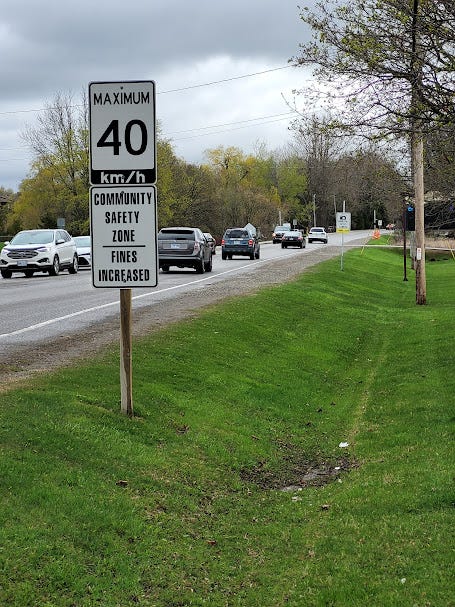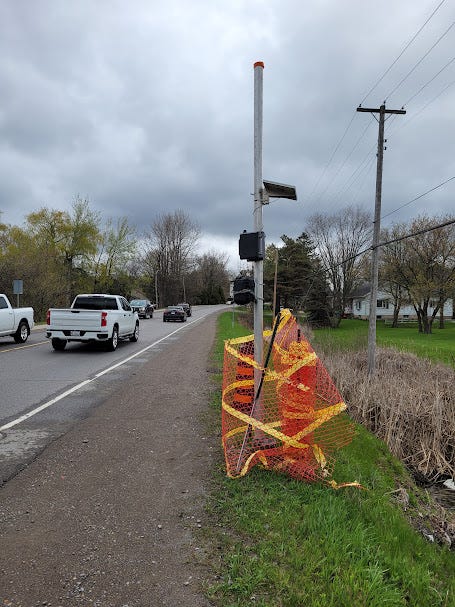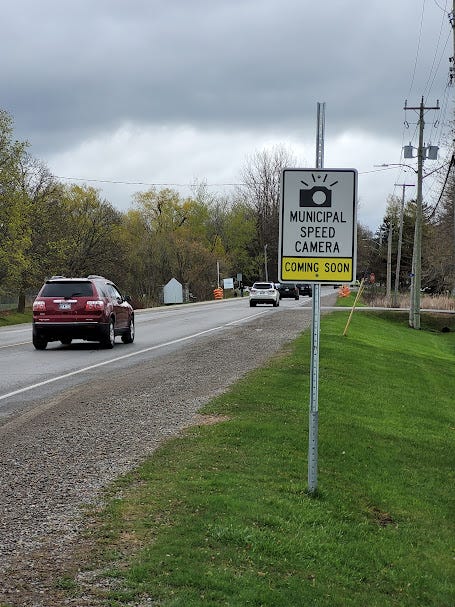Most drivers ignore speed limit
70% go too fast on Trent Drive in Campbellford, study finds

A new study being presented to Trent Hills council on Tuesday shows that more than 70 per cent of drivers who were southbound on Trent Drive in March were going well over the 40 km/h limit, despite large signs showing the limit and flashing numbers showing their exact speed.
The actual percentage for the month was 68 per cent, but it was artificially lowered because the last three days of the month were the icestorm, so no one was speeding anywhere. But even those days the top speeds were 75 and 77 km/h. Every other day about 75 per cent of drivers were speeding with the percentage hitting 79 per cent on two days.
In an effort to slow drivers, Trent Drive has been designated a community safety zone with a lower limit and large signs. But clearly drivers have learned to ignore those signals.
It will be interesting to see if council considers the next logical step – installing photo radar on the stretch.
In 2017, the province gave municipalities the power to install photo radar, called automated speed enforcement in an effort to make it sound better, in school or community zones.
Brighton has been moving slowly toward installing cameras on Elizabeth Street, the main thoroughfare out of town to the east, which is also a school zone and the location for many recreation facilities.
Brighton has been promising, or threatening, depending on your point of view, to install the cameras for a couple of years. For the past year it has had signs saying cameras were coming. Now, the cameras are installed, and protected by four locks, but they won’t be turned on until July. Instead, signs are warning drivers they will face tickets. In July signs saying Cameras in Use will be installed.
I have no idea why the municipality is so shy about enforcing the law. The cameras have been shown to reduce speeding, collisions, and injuries everywhere they have been installed.
And they raise a lot of money.
Belleville currently has four cameras that it is moving to different areas in June. It has issued a news release to tell drivers where they will be located.
The cameras aren’t always popular. The Belleville cameras have been subject to vandalism, with one being spray painted last week. One camera located on Parkside Drive in Toronto has been destroyed four times. It’s the highest-grossing speed camera in Toronto, issuing more than 65,000 speeding tickets worth $7 million, a Toronto Star story says.
Brighton’s website explains how the system works: The penalties for speeding over the enforcement limit are monetary, no demerit points are awarded. The citation is sent to the registered owner of the vehicle. The penalty, set by provincial regulation, varies with the extent the vehicle is over the limit. It is:
1 to 19 km over the limit is $5 per kilometre
20 to 29 km over the limit is $7.50 per kilometre
30 to 49 km over the limit is $12.00 per kilometre
50 kilometres per hour or more over the maximum speed limit is $19.50 per kilometre.
The Trent Drive survey clocked one vehicle at 98 km/h and almost daily had drivers in the 80s. Remember, this is in a 40 km/h zone.
Northumberland County is currently studying whether photo radar should be used on its roads.
“The county has been exploring use of automated speed enforcement (photo radar) in community safety zones,” said Kate Campbell, Director of Communications. “The Public Works Department is currently collecting data from the 11 safety zones throughout the county to estimate requirements for implementing a program in Northumberland.”
Campbell said a report to council is expected later this year.



You can read all Trent Hills News stories on the website here.




I refer you to an excellent discussion of road speed limits by "Not Just Bikes" at https://www.youtube.com/watch?v=bglWCuCMSWc
I'll ask the question proposed in the video. "Why is the speed limit 40 there?" I can see setting the limit to 30 km/h near Island Park, not only because there are seniors who cross the road at that point, but because people navigating over the dam and canal should be going slow and using caution anyway. For the rest of the road, a limit of 40 km/h seems out of place, which is *why* drivers are speeding.
The "logical next step" would be to set the speed limit to 60 km/h (which is clearly what the road was designed for), or if there's an actual reason for the limit beyond entitlement, to install traffic calming devices that will force drivers to lower their speed. Speed cameras introduce ongoing costs for maintaining the equipment, processing the data, sending out fines, collecting fines. As we've seen with more remote radar-based "slow down" signs, local yahoos might even damage the cameras, leading to more expense. Modifying the road would incur a larger initial capital cost, but lower costs for ongoing operation.
Since most only read the "trusted" MSN and their mockingbird narratives, here is a read regarding camera speed enforcement.
https://www.theglobeandmail.com/drive/mobility/article-why-are-we-so-obsessed-with-photo-radar-when-there-are-better-anti/
In short - its a cash grab. There are better ways.